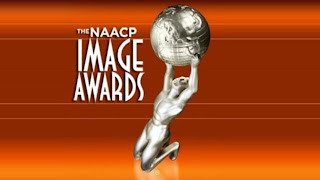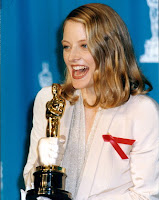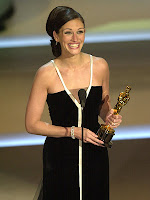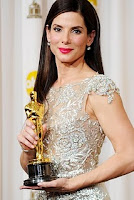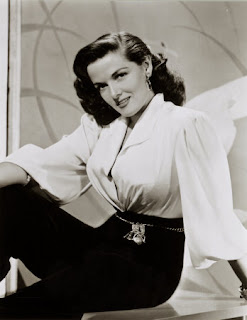The general media obsession with Mirren’s sex life has been replaced these days by a kind of awe, no less misogynistic, that a woman in her 60s can look attractive and happy. At 65, Mirren is adored and venerated; if it’s true that, after being made a Dame in 2003 and winning an Oscar in 2007 for playing the title role in The Queen, she has become that dreaded property, a national treasure, then at least she is one with plenty of sharp edges capable of giving you a painful nick if you’re not careful.
Feminism has gotten somewhat of a bad rap lately. Many people feel that it’s outlived its goals. Don’t women have equal rights now? What is there to complain about? The answer to this is that just giving people the legal possibility to do something doesn’t mean you are genuinely opening opportunities for them. Saying that giving people equal rights leads to them instantly being regarded as equals is like saying that giving African-Americans the right to vote ended racism in America. But what has all this to do with movies? Well, feminism isn’t just a political movement, but also an academic one. And yes, there is something like feminist film theory.
Not so for the moment a little earlier when, after spraying CCTV cameras with a fire extinguisher to cover the lens, she inexplicably, with the fire extinguisher still to hand, whips off her knickers to block the final camera. This she can do easily and a million times more gracefully than any knicker removal I’ve seen or executed in real life, thanks to the massive slit in the tight skirt she wears to her office job in the CIA. I can’t believe Jolie even did it, really. I’d have been tempted to punch the director in the face. There’s also a questionable moment at the beginning of the film when she’s learning to fold napkins for her anniversary dinner with her husband. I find it very hard to believe this was part of the original script, and while the function of the episode is clearly to establish the husband and the occasion, this would never have been written for the character as Cruise would have played it.
In the February 23, 2008 episode of Saturday Night Live, Tina Fey made a seemingly serious case for Hillary Clinton as president, arguing that we shouldn’t mind if she’s a bitch because “bitches get stuff done.” Fey went on to bolster her argument with the following observation: “That’s why Catholic schools use nuns as teachers and not priests. Those nuns are mean old clams, and they sleep on cots and are allowed to hit you. And at the end of the school year, you hated those bitches, but you knew the capital of Vermont.” How did nuns become part of this discussion? And how did they get reduced from the historical reality of their significant contributions to such a narrow and nasty caricature?
Shortly after the Oscars ended Sunday, Samuel L. Jackson sent an e-mail to a Times reporter wondering why no black men had been chosen to present awards on the film world’s biggest stage.“It’s obvious there’s not ONE Black male actor in Hollywood that’s able to read a teleprompter, or that’s ‘hip enuf,’ for the new academy demographic!” Jackson wrote. “In the Hollywood I saw tonite, I don’t exist nor does Denzel, Eddie, Will, Jamie, or even a young comer like Anthony Mackie!”
Jackson may be on to something, at least when it comes to the young comers.
For me, this frustration is usually borne of being othered and disrespected, when I simply aimed to be entertained by a trashy novel or TV show. I dipped into Charlaine Harris’ Aurora Teagarden series, hoping to enjoy the books as I enjoy the TV series based on Harris’ Sookie Stackhouse series. Instead, I got a bunch of thinly-written, triggering stories where all women (but the protagonist) are routinely judged harshly and women like me (black women) are alternately sassy or angry or dead or running from the law, and blackness or Jewishness or gayness or any other “ness” that is not small-town and conservative and Southern and Anglo and Christian is to be frowned at or remarked upon or, best, hidden. And so, instead of enjoying a cozy mystery in my downtime, I wound up feeling uncomfortable and marginalized.
I dislike SATC for the way it forced its central characters into stereotypes. To service those stereotypes for the sake of a storyline. Chris Noth was the tall-dark-and-handsome wealthy man. Kim Cattrall the over-sexed hyper-assertive female who had to stumble over failed romances or personal trauma (breast cancer) to show her sensitivity. Cynthia Nixon is the cynical New York career-woman. Kristen Davis the doe-eyed, Rules playing, sweater-set wearing woman on a mission for the nuclear family and nothing else. Sarah Jessica Parker is the child who plays dress-up, even in her marriage, trying on costumes in the hopes that they’ll make her lifestyle complete. These roles needed to be boldly and sharply drawn in oder to parody or even slay some of the stereotypes of women.
At a do last year to crown Lennox Barclays Woman of the Year, barely half the roomful of 450 of Britain’s brightest women admitted to being a feminist. Lennox was disgusted. “They were afraid,” she says. In a sort of stream of consciousness ramble, she adds: “The word feminism needs to be taken back. It needs to be reclaimed in a way that is inclusive of men. Men need to understand, and women too, what feminism is really about. And it is not the parody that it has been diminished and turned into, and it is not this parody about whether you burn your bra or shave your armpits or whatever. That’s just nonsense. Actually it’s a red herring. It’s really disgraceful that it has become the kind of dumbing down of something that has to do with human rights, social and political values – and where we’re going as a world that is dominated by war and strife. And young women being born still have no rights over what is done to their bodies.”
Thelma and Louise came out in May of 1991 and change was in the air. The film touched a raw nerve in women that had been lying dormant during the Reagan backlash years. It became a cultural touchstone, was on covers of magazines, and got both Geena Davis and Susan Sarandon Academy Award nominations. Geena Davis tells stories of women seeing her on the road and honking at her and thanking her for the film. But here we are 20 years later and it feels like that film was never made.
Today, it’s time to look back at ten women who’ve made cinematic history. I won’t claim that this ten constitutes the “best,” because to do so would immediately detract from the hundreds and thousands of women developing cinema worldwide. These are, quite simply, ten women you should be familiar with. Some have the honor of “first,” while others have left an indelible impact on the industry.Consider this your springboard to a rich history of female talent.
On the silver screen women are usually seen as a helpless mother, submissive wife, devoted girlfriend, overcaring sister, daughter or a vamp, but directors like Vishal Bharadwaj and Alankrita Shrivastava are trying to break the mould and present women in a more realistic, vibrant and unconventional way.One-film-old Rajkumar Gupta’s “No One Killed Jessica” was an attempt to bring alive the struggle of Sabrina Lall’s fight with the Indian judiciary for years to get justice for her murdered sister.
Kathryn Bigelow may have been the first female filmmaker to win a Best Director Oscar for 2009′s The Hurt Locker. But did you happen to notice that for the most recent Academy Awards, the nominees in the same category were all men — in a year when two movies directed by women, Winter’s Bone and The Kids Are All Right, were up for Best Picture?Gender inequalities exist throughout the arts, but they’re especially pronounced in the rarefied world of film directing. We all know a few big-name women filmmakers: Bigelow, Sofia Coppola, Susan Seidelman, Catherine Hardwicke, Nora Ephron, Julie Taymor. In honor of International Women’s Day, we present ten great, contemporary female directors who you may not know but should definitely check out.
The key to the influence of film is HOW film is used to represent violence against women to the masses. The key is to see film as a tool:Done well, a powerful documentary, movie, public service announcement, music video or television episode can give might momentum to helping activists and nonprofits working to end violence against women motivate grassroots support for the cause.
Done right, the film-maker will be able to walk the balancing act of accurately depict the horrors of violence against women while inspiring the viewer to join the movement to end violence against women.
SHARE YOUR LINKS!

